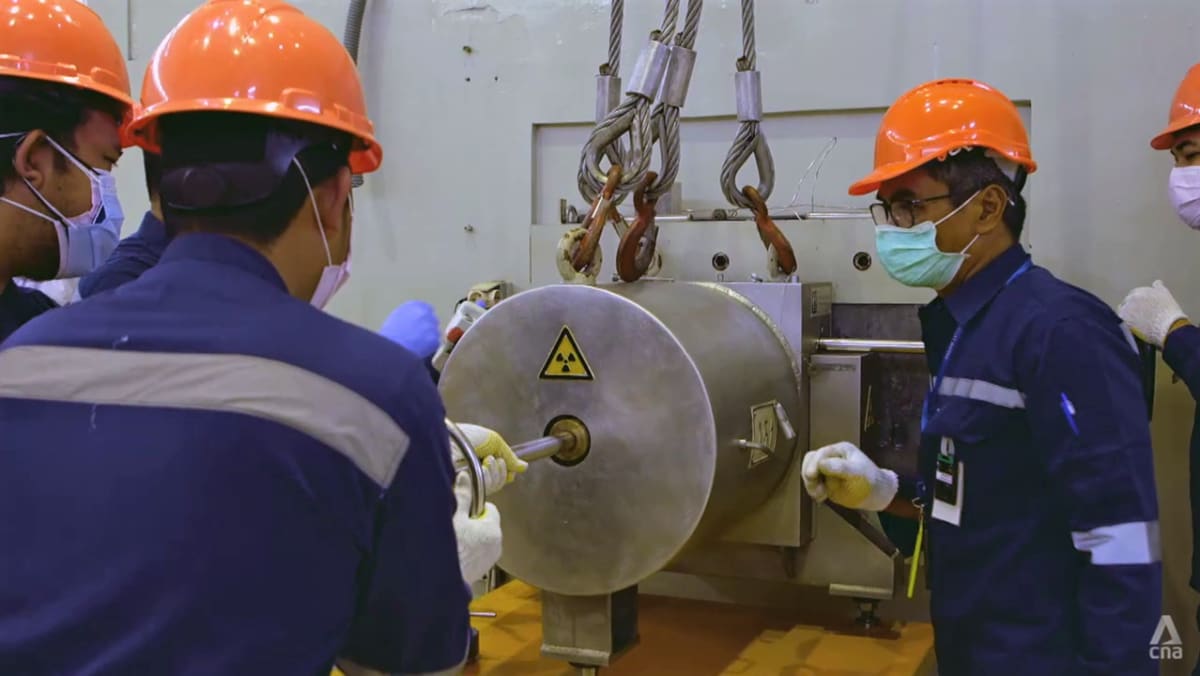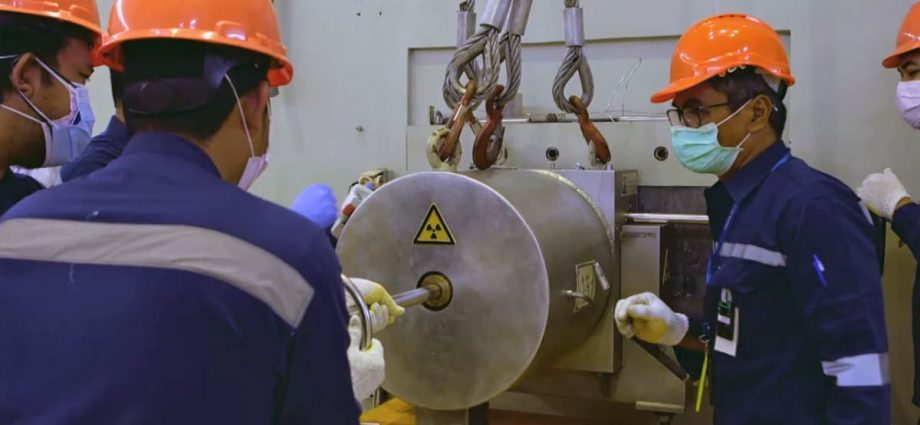
‘NEW’ ENERGY FOR LOW-CARBON PUSH
Indonesia has long since considered nuclear energy deployment, but its inclusion in a proposed law aimed at promoting renewables and “new energy” reignited debate this year over the controversial energy source.
Nuclear energy is generally not considered a form of renewable energy. But it is a low-carbon energy source and, under Indonesia’s proposed law, is considered a source of new energy.
If tapped by 2045 — under a plan to build a nuclear power plant — it would help the country achieve its aim of retiring some coal power plants early while meeting energy needs.
Indonesia generates about 60 per cent of its energy from coal, the most pollutive fossil fuel, but has pledged to achieve net-zero emissions by 2060.
It also aims to derive 23 per cent of its energy from renewables by 2025, up from about 12 per cent now.
“We must enter a new and renewable energy era,” declared Sugeng Suparwoto, chairman of a commission in Indonesia’s House of Representatives that oversees energy, mineral resources, research and technology as well as environmental affairs. “This isn’t a choice.”
Indonesia’s electricity demand is forecast to increase by more than fivefold from 2021 to 2060, according to the International Energy Agency. Without nuclear energy, it is “almost impossible” to meet the country’s climate and energy goals, said Sugeng.
Compared to solar or wind power, nuclear energy using the same land area has a bigger generation capacity, pointed out Margareth Sembiring, an associate research fellow at the S Rajaratnam School of International Studies’ Centre for Non-Traditional Security Studies.
According to the Washington-based Nuclear Energy Institute, wind farms in the United States require 360 times more land area to produce the same amount of electricity as a nuclear facility. Solar farms require 75 times more land area.
Nuclear energy output is also not subject to weather conditions. “A nuclear power plant is the most reliable. It can run 24 hours a day and 365 days a year,” said Sugeng.
CONCERNS OVER GOVERNANCE, COST OF FALLOUT
But some analysts and environmental groups oppose its deployment because of safety and governance concerns.
“When we talk about nuclear (energy), we’re not talking about something that’s for five to 10 years. This is a lifetime liability,” said Putra Adhiguna, an energy analyst at the Institute for Energy Economics and Financial Analysis.
Nuclear energy infrastructure and policies will require a good regulatory system that is free of corruption, as well as long-term maintenance, he added. “Indonesia may or may not have that long-term stability and commitment to follow (through with) such regulations.”
Greenpeace Indonesia country director Leonard Simanjuntak shared those sentiments.
Greenpeace, an environmental campaigning network, opposes the inclusion of nuclear power in Indonesia’s energy bill, and Simanjuntak said: “We aren’t convinced at all that we have a solid governance system that can manage massive nuclear power plants.”
“Mismanagement” has been observed at Indonesia’s small reactors, he added.
In 2020, radioactive substances including Caesium-137, which is commonly used for industrial and other purposes, were found in a housing complex outside Jakarta. A Batan employee running illegal decontamination services for extra income had kept the substances in his home.
The authorities extracted the contaminated materials and stored them in a “special container” in the National Research and Innovation Agency’s centre for radioactive waste, said Mego Pinandito, the agency’s deputy for development policy. “The problem is resolved,” he said.
Indonesia’s energy sector has also seen graft scandals in the past decade, including one involving former energy minister Jero Wacik. He was given a four-year sentence in 2016 for two separate embezzlement cases — one while he was tourism minister.
The cost of cleaning up any radioactive fallout must be factored in when considering nuclear energy, said Putra. Japan’s Fukushima clean-up, for instance, is estimated to cost US$200 billion (S$280 billion) or more and will take decades.
“If such an incident happens, who’ll cover the cost?” he questioned. “When something does go wrong, you can destabilise an entire national budget.”
Mego, however, said the technology in the Fukushima plant was “old”. With automation and new machines connected to sensors, “hopefully those incidents won’t happen again”, he said. “In addition, there are new materials that can withstand hotter temperatures.”
WILL IT BE A CASE OF ‘NOT IN MY BACKYARD’?
For a project to go ahead, public support would be a key factor, and Margareth cautioned that public sentiment is more nuanced in real life.
While surveys may show people supporting nuclear energy deployment, their views may change if power plants are to be built where they live. “They’ll say, not in my backyard,” she said.
Sites that Indonesia has considered for a plant include the Muria peninsula in central Java, and the Bangka Belitung Islands off Sumatra.
A study published this year by researchers from Batan and Universitas Pendidikan Indonesia also found West Kalimantan to have a large suitable area.
Putra and Leonard, however, want Indonesia to first expand the capacity of renewables like solar power.
Major projects in the pipeline include the US$140-million floating solar-powered plant in the Cirata reservoir in West Java, which will cover 250 hectares and have a capacity of 145 megawatts when completed.
It could operate by year end, said Sondang Oinike Leonora, corporate secretary of Pembangkitan Jawa Bali Investasi, a subsidiary of state utility Perusahaan Listrik Negara, which is developing the plant with Abu Dhabi company Masdar.
Amid all the ramp-up in renewable and new energy projects, there is still the matter of getting remaining pockets of Indonesians hooked up to electricity — communities such as Cilele village, just 50 km east of Jakarta.
Oman, a leader in the community of 5,000 people, cited reasons such as being in a forested area and the inability to afford electricity. The villagers’ average monthly income is less than 1 million rupiah (S$90), he said.
They use kerosene lamps, with some solar panels and batteries helping to power light bulbs at night. But villager Roanah, 47, wishes she could watch television regularly. Her current entertainment, she said, is “chatting with (her) husband”.
Watch this episode of Insight here. The programme airs on Thursdays at 9pm.

